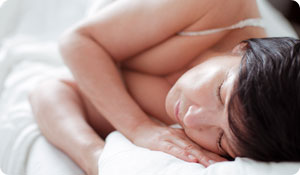
If you live in a dry climate or heat your home during winter months, a humidifier can help moisten the air and reduce irritation in your bronchial tubes. And depending on what triggers your symptoms, a humidifier can also help reduce the risk of an asthma attack.
Although the potential symptoms of asthma-wheezing, shortness of breath, coughing and tightened chest from constricted airways-are the same for everyone, what triggers the attack varies from person to person. In some people, asthmatic symptoms are triggered by allergies to such things as dust or mold. In others, hard physical work or exercise can cause airways to constrict.
Self-care is as important as the medication you take to control asthma symptoms. For some people, that includes using a room humidifier when you are exposed to dry air indoors. For others, air that's too damp can be problematic.
Keep it Low
If you have allergies, use a room humidifier only if you have very dry air in your home. Ideally, humidity should be less than 50 percent. Under most circumstances, the healthiest humidity range is between 30 and 40 percent, according to Rush University Medical Center in Chicago. Higher humidity only encourages the growth of mold, mildew, and dust mites. In fact, if you have allergies and live in a humid climate, you may need a dehumidifier to get some of the moisture out of the air.
At the same time, when humidity is too low, such as when you live in a desert climate or during winter when the heat is on in your home, you may suffer from irritation in your eyes, nose and throat. In these cases, a room humidifier might be a good idea, especially in your bedroom, if you are sleeping in dry air.
Keep It High
Exercise-induced asthma is different and in this case, adding humidity to the air can be beneficial. Early studies on the affect of humidity on asthma symptoms found that airway constriction was significantly worse in children with exercise-induced asthma who ran on a treadmill in a room with drier air than those who ran in a room with humidity as high as 90 percent. Later research confirmed this effect in both children and adults. A Canadian study published in a 1991 issue of the European Respiratory Journal concluded that the risk of exercise-induced asthma symptoms is higher when exercise is performed in dry air conditions and recovery is in humid conditions, and significantly lower under the reverse conditions (exercising in more humid air and recovery after exertion in drier air).
Keep It Simple
Speak with your doctor to find out if a humidifier might help reduce your symptoms. If so, you don't need the fanciest or most expensive humidifier to get the job done, but be sure to choose one that is the right size for the room it will be used in, is easy to clean, and has an automatic turn-off in case the water tank runs dry while you are sleeping or out of the room. Some humidifiers also come with humidity gauges and controls. No matter how sophisticated the apparatus, use filtered or distilled water to prevent mineral build up and discourage the growth of microorganisms in the water tank.
Keep It Clean
If you do use a humidifier, it is important to make sure that the machine itself doesn't contribute to the problem. Drain and dry your humidifier daily to prevent the growth of mold and mildew that thrive in standing water. Clean the machine thoroughly every few days, using a bottle brush or the equivalent to scrub hard-to-reach corners or other parts of the system where sediment can build up. Unless otherwise specified by the manufacturer, allergist Karen H. Calhoun, MD, FACS, FAAOA, a professor at the Ohio State University, suggests using white vinegar to clean your humidifier, unless directed otherwise by the manufacturer. Vinegar as a cleaning agent is a "green" alternative to diluted bleach or peroxide.
Sources:
Karen H. Calhoun, MD, FACS, FAAOA
Department of Otolaryngology, The Ohio State University
Bar-Or, O; Neuman, I and Dotan, R. "Effects of Dry and Humid Climates on Exercise-Induced Asthma in Children and Preadolescents" The Journal of Allergy and Clinical Immunology. 1977 Sept;60(3):163-8 Web 2013 March
http://www.ncbi.nlm.nih.gov/pubmed/893875
The Children's Hospital of Philadelphia: Vaporizers and Humidifiers Web 2013 March
http://www.chop.edu/healthtips/vaporizers-and-humidifiers.html
Ohio State University Wexner Medical Center: Management of Asthma
http://medicalcenter.osu.edu/patientcare/healthcare_services/allergy_asthma/about_asthma/asthma_management/Pages/index.aspx
Rush University Medical Center: Defeating the Dry Winter Air Web 2013 March
http://www.rush.edu/rumc/page-1270050424623.html
Stensrud, T; Berntsen, S and Carlsen, KH. "Humidity Influences Exercise Capacity in Subjects with Exercise-Induced Bronchoconstriction (EIB)" Respiratory Medicine. 206 Sep;100(9):1633-41 Web 2013 March
http://www.ncbi.nlm.nih.gov/pubmed/16446080





